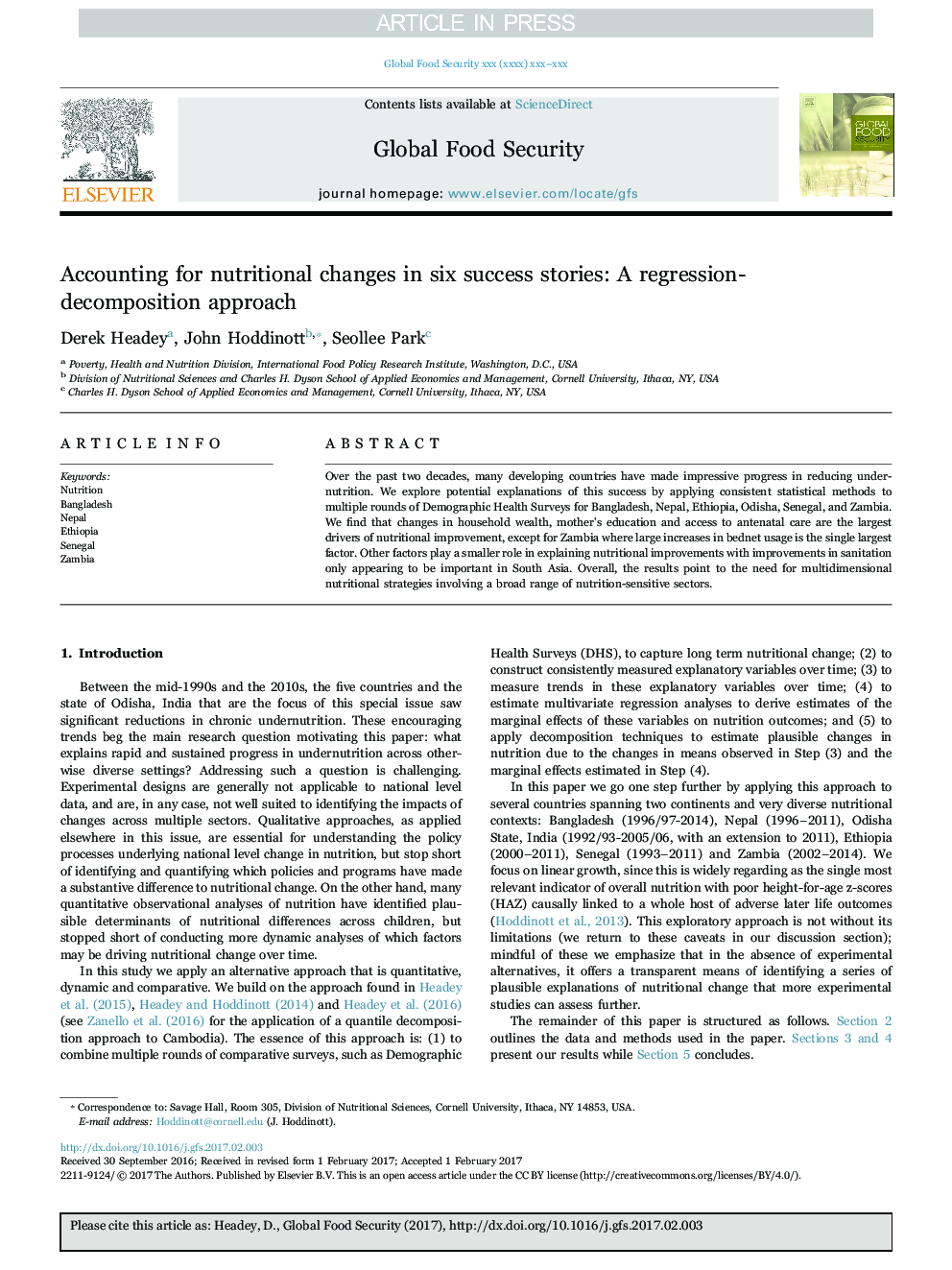| Article ID | Journal | Published Year | Pages | File Type |
|---|---|---|---|---|
| 5114543 | Global Food Security | 2017 | 9 Pages |
Abstract
Over the past two decades, many developing countries have made impressive progress in reducing undernutrition. We explore potential explanations of this success by applying consistent statistical methods to multiple rounds of Demographic Health Surveys for Bangladesh, Nepal, Ethiopia, Odisha, Senegal, and Zambia. We find that changes in household wealth, mother's education and access to antenatal care are the largest drivers of nutritional improvement, except for Zambia where large increases in bednet usage is the single largest factor. Other factors play a smaller role in explaining nutritional improvements with improvements in sanitation only appearing to be important in South Asia. Overall, the results point to the need for multidimensional nutritional strategies involving a broad range of nutrition-sensitive sectors.
Related Topics
Life Sciences
Agricultural and Biological Sciences
Agronomy and Crop Science
Authors
Derek Headey, John Hoddinott, Seollee Park,
